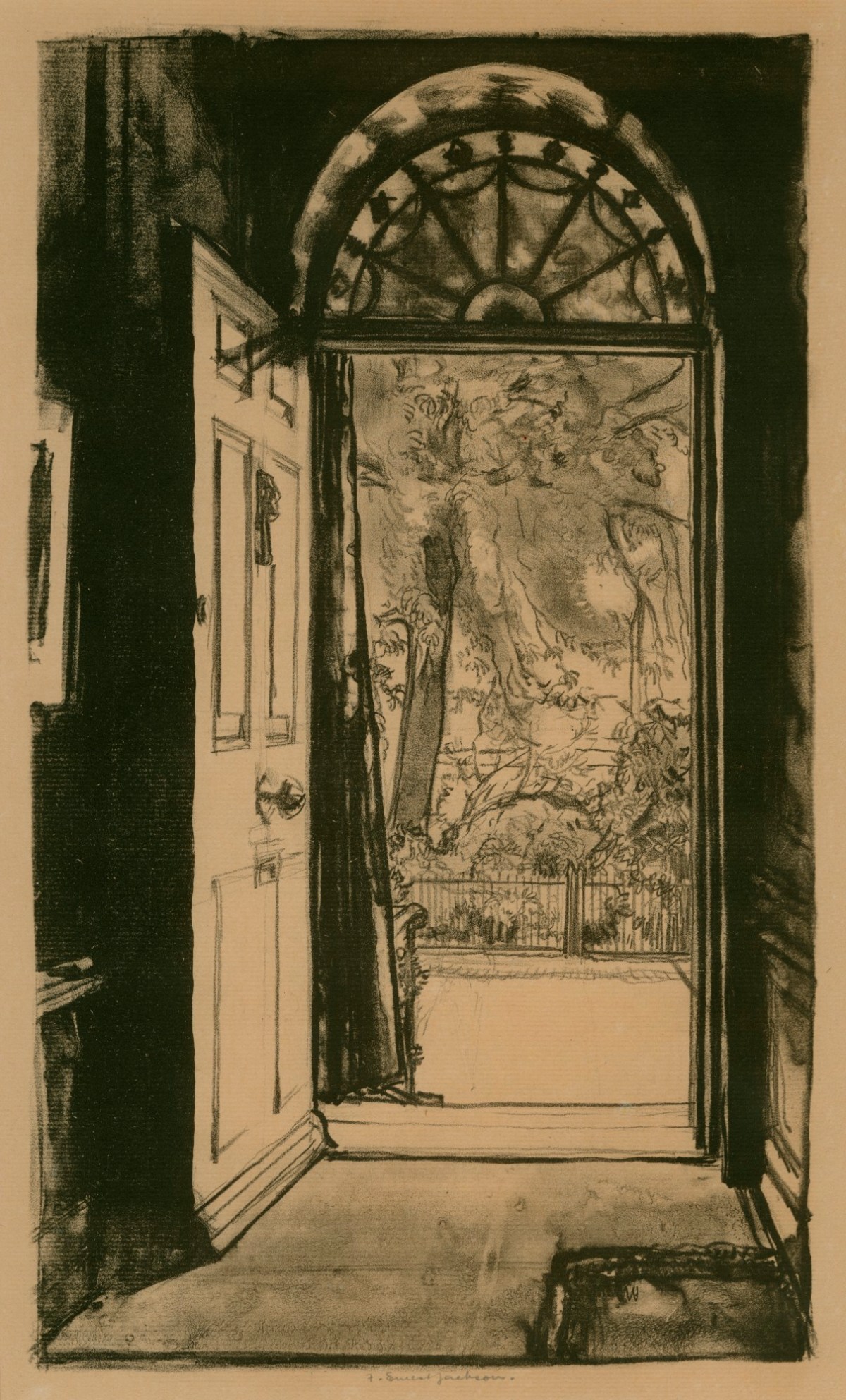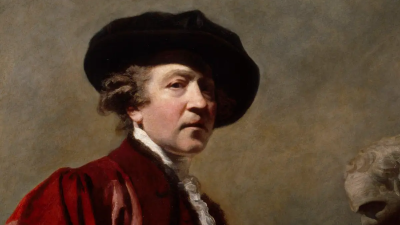
F. Ernest Jackson ARA, The Front Door, 1913.
Lithograph. 325 mm x 190 mm. © Photo: Royal Academy of Arts, London.
This image is not available to download. To licence this image for commercial purposes, contact our Picture Library at picturelibrary@royalacademy.org.uk
The Front Door, 1913
F. Ernest Jackson ARA (1872 - 1945)
RA Collection: Art
In The Front Door, the artist F. Ernest Jackson shows a view from the hallway of his home, Morton House on Chiswick Mall, out of the open door on to the gardens and River Thames beyond, with the foliage of Chiswick Eyot just visible in the distance. The practice of monochrome lithography has been used to bold effect in this print, emphasising the darkness inside the house in contrast to the bright sunlight outdoors. Jackson lived at Morton House from 1912 until 1919 and produced several other lithographs that depict his home.
The draughtsman, lithographer and painter, Francis Ernest Jackson, was born in Lockwood, Huddersfield in Yorkshire on 15 August 1872. His father was a stationer and the young Jackson became an apprentice lithographer in a printing firm where his talents were recognised and he was encouraged to draw. Jackson trained in Paris in the late 1890s, where he met such artists as the Impressionists Edgar Degas and Claude Monet. Having seen the outcome of the revival of artistic lithography in France in the work of artists such as Henri de Toulouse-Lautrec, Jackson came back to England with renewed enthusiasm for the medium.
On his return Jackson studied trade lithography at the School of Photo-Engraving and Lithography at Bolt Court in London. Artists at this time generally saw lithography as an expensive and complicated procedure as they had to employ professional lithographers to print their work, who kept the process a secret. But Jackson began teaching lithography at art schools, including Croydon (until 1908), Camberwell (1903-13), Chelsea (1905-22) and, most importantly, the Central School of Arts and Crafts (1902-21), where he opened up the process to a wider audience, revolutionising its use in Britain in the early twentieth century. The American artist and printmaker John Copley reflected on Jackson in 1946 that 'Lithography in England today is really his creation'.
In 1907 Jackson was a founder of the quarterly periodical, The Neolith, which was printed entirely in lithography, for text as well as illustrations. The following year he became one of the founder members of the Senefelder Club, who shared a printing press and studio. The group was named after Alois Senefelder (1771-1834) who had invented lithography in Munich in the late eighteenth century. The club held its first exhibition in 1910 at the Goupil Gallery, London, stating that it stood 'for the advancement of artistic lithography'. Impressions of The Front Door were exhibited in 1913 at the Goupil Gallery and the Carnegie Institute, Pittsburgh for the Senefelder Club's annual exhibition. Jackson went on to produce lithographic posters for the London Underground with his Senefelder colleagues in the 1910s and in 1913 was one of the founders of another periodical, The Imprint, in which he wrote about lithography.
In making The Front Door, Jackson would not only have drawn the original design himself but also printed the work. Lithographs are made by drawing a design on to a piece of limestone using a greasy chalk, ink or wash. (In this case, the walls, floor, curtain and tree were drawn in wash with the areas of detail drawn in chalk.) Gum arabic solution is then spread over the stone, which soaks into the undrawn areas. When water is washed over the surface of the stone it sits on top of the gum arabic solution so that when a greasy printing ink is rolled over the stone the water repels it, which means that ink is only held where there is a drawn mark on the stone. Paper is then placed on the stone, which is rolled through a printing press to produce the finished lithograph. Most lithographs are produced in numbered editions; in this case the print is one of fifty that Jackson produced.
The Front Door has been conserved through a generous donation from the artist's granddaughter, Margaret Bear, 2012.
Object details
325 mm x 190 mm
Start exploring the RA Collection
- Explore art works, paint-smeared palettes, scribbled letters and more...
- Artists and architects have run the RA for 250 years.
Our Collection is a record of them.



